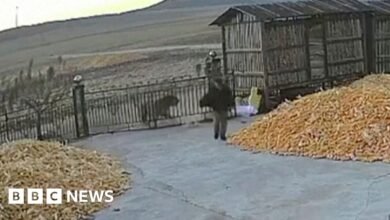Chandrayaan, Mangalyaan: Why it costs India so little to reach the Moon and Mars

“We chose the second option. We reduced the number of thrusters from 16 to eight and pressure tanks and batteries were reduced from two to one.”
Reducing the number of batteries, Mr Annadurai says, meant the launch had to take place before the end of 2008.
“That would give the spacecraft two years while it went around the Moon without encountering a long solar eclipse, which would impact its ability to recharge. So we had to maintain a strict work schedule to meet the launch deadline.”
Mangalyaan cost so little, Mr Annadurai says, “because we used most of the hardware we had already designed for Chandrayaan-2 after the second Moon mission got delayed”.
Mr Bagla says India’s space programme coming at such low cost is “an amazing feat”. But as India scales up, the cost could rise.
At the moment, he says, India uses small rocket launchers because they don’t have anything stronger. But that means India’s spacecraft take much longer to reach their destination.
So, when Chandrayaan-3 was launched, it orbited the Earth several times before it was sling-shot into the lunar orbit, where it went around the Moon a few times before landing. On the other hand, Russia’s Luna-25 escaped the Earth’s gravity quickly riding a powerful Soyuz rocket.
“We used Mother Earth’s gravity to nudge us to the Moon. It took us weeks and a lot of resourceful planning. Isro has mastered this and done it successfully so many times.”
But, Mr Bagla says, India has announced plans to send a manned mission to the Moon by 2040 and it would need a more powerful rocket to fly the astronauts there quicker.
The government recently said, external work on this new rocket had already been approved and it would be ready by 2032. This Next Generation Launch Vehicle (NGLV) will be able to carry more weight but also cost more.
Also, Mr Bagla says, India is in the process of opening up the space sector to private players and it’s unlikely that costs will remain so low once that happens.
Follow BBC News India on Instagram, external, YouTube, external, Twitter , externaland Facebook, external.



